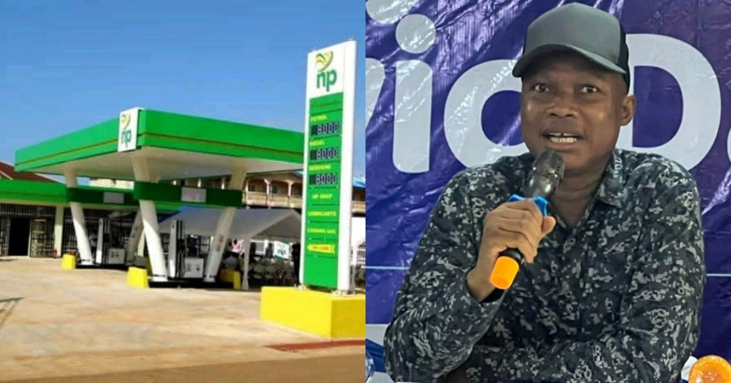By Mackie M. Jalloh
A strategic shift in petroleum pricing has helped the National Petroleum Regulatory Authority (NPRA) deliver a significant financial boost to Sierra Leone’s treasury, exceeding revenue expectations by NLe104.1 million. The impressive performance was made public by Minister of Finance, Ahmed Sheku Fantamadi Bangura, during his presentation of the 2025 Supplementary Budget Statement to Parliament on July 29.
Rather than relying on subsidies or ad hoc price controls, the NPRA introduced a full-cost recovery pricing formula—often referred to as the full-pass-through model—to ensure domestic pump prices reflect real-time changes in global oil markets, exchange rates, and excise duties. The result, according to fiscal authorities, has been a surge in excise duty revenues and improved transparency in fuel pricing.
“This formula is not just a financial tool—it is a governance tool,” said Minister Bangura in Parliament. “Excise duty on petroleum products exceeded projections by NLe104.1 million, a testament to the strategic value of pricing reform in strengthening national revenue.”
The full-pass-through system triggers price adjustments when international market dynamics push cost variations above a 5% threshold. This ensures that the local fuel market remains aligned with global realities while minimizing fiscal shocks to the government and maintaining relative price stability for consumers.
The NPRA’s model replaces decades of inconsistent price setting and opaque subsidy structures that often left the government grappling with fuel import costs and revenue leakages. By adopting a predictable and formula-based pricing framework, the NPRA has established a foundation for more sustainable fiscal planning in the energy sector.
Director General of the NPRA, Brima Baluwa Koroma, hailed the revenue milestone as a reflection of the Authority’s data-driven approach and commitment to reform.
“Our pricing framework is not arbitrary—it is anchored in economic logic and market indicators,” Koroma stated. “We conduct regular market assessments and rely on cost analysis, exchange rate data, and freight costs to ensure that the end-user price is accurate and justified.”
In an effort to maintain public trust, the NPRA has been proactive in sharing its methodology. The agency routinely publishes updates and pricing breakdowns through its official channels to educate the public on how pump prices are determined.
“We believe that transparency drives accountability. That’s why our pricing mechanism is openly documented and available to all stakeholders,” Koroma added.
The boost in excise revenues also stems from new oversight and compliance reforms targeting fuel importers and distributors. According to Minister Bangura, these reforms have enhanced the government’s ability to track fuel flows, curb underreporting, and plug revenue losses.
“This is not just about collecting more—it’s about collecting better. With improved systems and tighter monitoring, we are seeing the results in our numbers,” the Finance Minister noted.
The additional revenue has offered the government some much-needed fiscal space to invest in key sectors, particularly healthcare, education, and infrastructure. While not a windfall, the surplus is seen as a sign of better revenue administration and a shift towards greater fiscal responsibility.
“This achievement may appear modest, but it is deeply symbolic,” said one local economist. “It reflects a change in how public institutions are managing the economy—not through arbitrary fixes, but through structured, market-aware reforms.”
Amid global uncertainty in energy markets, Bangura also commended the resilience of ordinary Sierra Leoneans. “We understand that fuel price fluctuations impact daily life, but we want to assure citizens that this pricing model is designed to avoid arbitrary hikes and ensure long-term economic stability.”
With Sierra Leone navigating inflationary pressures, debt servicing obligations, and development challenges, the NPRA’s performance is viewed as a model for reform-minded institutions in other sectors.
As the country looks to the second half of the fiscal year, government officials have signaled their intention to build on this momentum—relying on sustainable revenue streams and enhanced transparency to meet growing demands for public goods and services.



